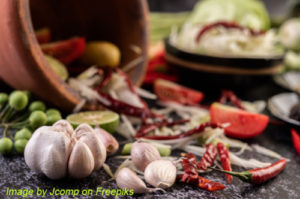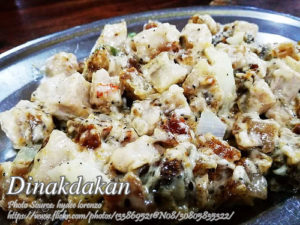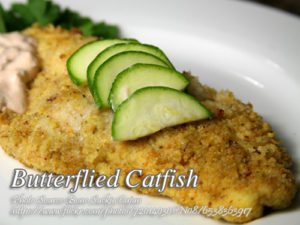There is a quote I remember “Simplicity is the ultimate sophistication” from Leonardo Da Vinci and I can relate it to this simple to cook pork sisig. Because the ingredients are so simple and yet it is so tasty and you don’t need any additional or special ingredients just to make this authentic sisig. Most of the pork sisig today has mayonnaise, liquid seasoning and fried eggs but this recipe here which is an authentic Kapampangan sisig use only salt, pepper, onions and calamansi juice for seasoning. So what are you waiting for? start cooking now and taste for yourself!
A Taste of Authentic Filipino Cuisine
When it comes to Filipino cuisine, few dishes capture the essence of regional flavors and cultural heritage as vividly as sisig. Originating from Pampanga, a province in the Philippines known as the culinary capital of the country, this dish exemplifies the Filipino philosophy that simple ingredients can create extraordinary flavors. As Leonardo Da Vinci once said, “Simplicity is the ultimate sophistication,” and sisig kapampangan is a testament to this truth.
The Origins of Sisig: A Culinary Heritage
Sisig has a rich history that dates back to the 17th century. Originally, the term “sisig” referred to a method of preparing meat and fish by marinating them in a mixture of vinegar and salt. This technique was used primarily to prevent spoilage and enhance flavor. Over time, sisig evolved, and in the 1970s, the late Lucia Cunanan, affectionately known as Aling Lucing, revolutionized the dish. She introduced grilled pig’s head and ears, seasoned with calamansi, onions, and chili, creating the modern version of Sisig that we know and love today.
Ingredients that Define Sisig
The beauty of this dish lies in its simplicity. Unlike many contemporary versions that incorporate mayonnaise, liquid seasoning, and fried eggs, the authentic recipe requires only a handful of basic ingredients. The key components include pork jowl, chicken liver, onions, green chilies, calamansi juice, salt, and ground pepper. Each ingredient plays a crucial role in achieving the dish’s unique texture and flavor profile.
Preparing the Perfect Pork Jowl
The first step in making sisig is preparing the pork jowl. This cut of meat is prized for its tenderness and rich flavor. Start by washing the pork jowl thoroughly to remove any impurities. Next, bring a pot of water to a boil and add black peppercorns and bay leaves to infuse the meat with subtle aromatic notes. Simmer the pork jowl until it becomes tender, then let it cool in a colander or strainer.
The Role of Chicken Liver in Sisig
While pork jowl provides the primary texture for Sisig, chicken liver adds depth and richness to the dish. Season the liver with salt and pepper, then grill or fry it until it turns a delicious golden brown. Once cooked, chop the liver into small pieces. This step not only enhances the flavor but also ensures that the liver blends seamlessly with the other ingredients.
Achieving the Perfect Crisp
Grilling or frying the pork jowl is crucial to achieving the characteristic crispiness of Sisig. Once the pork is tender, grill or fry it until the skin turns crispy and golden brown. Afterward, chop the pork into small, bite-sized pieces. The combination of tender meat and crispy skin creates a delightful contrast that is a hallmark of authentic sisig.
Combining the Ingredients
With the pork and chicken liver prepared, it’s time to bring all the ingredients together. In a mixing bowl, combine the chopped pork, chicken liver, onions, green chilies, salt, ground pepper, and calamansi juice. The calamansi juice, a staple in Filipino cuisine, imparts a tangy brightness that balances the richness of the meat. Mix the ingredients until they are well combined, ensuring that each bite is infused with the vibrant flavors.
Serving Sisig on a Sizzling Plate
One of the most iconic elements of this sisig is its presentation on a sizzling plate. Heat the sizzling plate on a stove and melt a tablespoon of butter or margarine. Once the butter is melted, add a portion of the Sisig mixture to the plate and stir carefully for a few minutes until it becomes slightly browned. The sizzling plate not only keeps the Sisig warm but also adds a delightful sizzle that enhances the dining experience.
The Final Touch: Serving The Sisig
To serve, remove the sizzling plate from the stove and place it on a wooden holder. Garnish with slices of calamansi, soy sauce, and siling labuyo (bird’s eye chili) for an extra kick of heat. The combination of textures and flavors makes each bite of kapampangan inspired sisig a culinary adventure.
Food for Thought: Sisig Beyond Pampanga
While sisig remains a beloved dish in its place of origin, it has also gained international recognition. Filipino restaurants around the world have introduced this dish to a global audience, showcasing the richness of Filipino culinary traditions. Each version tells a story of cultural exchange and adaptation, but the heart of Sisig—its simplicity and sophistication—remains unchanged.
Conclusion: The Timeless Appeal of kapampangan Inspired Sisig
This sisig is more than just a dish; it is a celebration of Filipino ingenuity and culinary heritage. Its simple ingredients, combined with meticulous preparation, create a symphony of flavors that has captivated food enthusiasts for generations. Whether enjoyed in the bustling streets of Pampanga or in a cozy kitchen halfway across the world, this pork dish is a reminder that sometimes, the most straightforward recipes can leave the most lasting impressions. So, why wait? Start cooking and experience the authentic taste of sisig today!
How to Cook Sisig Kapampangan
Ingredients
- 1 kilo pork cheek or pork jowl
- 1/4 kilo chicken livers
- 1 tsp. black pepper corns
- 3 pcs bay leaves
- 1/4 tsp. black pepper powder
- 1/2 tsp. salt
- 1 to 2 pieces white onion chopped
- 1/3 cup calamansi juice or lemon juice
- 1 tsp. ground black pepper
- 1 Tbsp. salt or to taste
- 1 pc long green chili sliced diagonally
- 1 Tbsp. butter or margarine per sizzling plate
- siling labuyo soy sauce and calamansi for condiments
Instructions
How to Cook Sisig Kapampangan
- Wash pork jowl and remove any impurities then drain. Bring water to a boil in a cooking pot just enough to cover the meat.
- Put the pork jowl, black peppercorns and bay leaves. Simmer until the pork is tender.
- When tender, remove from the pot and let it cool on a colander or strainer.
- Season the chicken liver with salt and pepper. Then grill or fry the chicken liver until brown. Then chop the liver into small pieces.
- Grill or fry the pork jowl until crispy then chop into small pieces. Set aside.
- Prepare a mixing bowl and combine pork, chicken liver, onions, green chilies, salt, ground pepper, calamansi juice or lemon juice then mix the ingredients until well combined.
- Heat a sizzling plate on a stove and melt 1 Tbsp. of butter or margarine. Put some of the sisig mixture on the sizzling plate the stir carefully for a few minutes or until slightly brown.
- When done remove from stove and place on a wooden holder and serve immediately with slices of calamansi, soy sauce and siling labuyo.
Video
Notes
Cooking Tips :
- Perfecting Pork Jowl Texture: To achieve the ideal tenderness in the pork jowl, simmer it in boiling water with black peppercorns and bay leaves until it reaches a melt-in-your-mouth consistency, ensuring a delightful contrast to the crispy texture attained during the grilling or frying stage.
- Infusing Flavor with Chicken Liver: Elevate the sisig's richness by seasoning and grilling or frying the chicken liver separately before chopping it into small pieces. This extra step adds a depth of flavor, making each bite a harmonious blend of savory goodness.
- Sizzling Plate Finishing Touch: When transferring the sisig mixture to the sizzling plate, ensure it is well-mixed and stir carefully for a few minutes until the edges achieve a tempting brown hue. This final step not only enhances the visual appeal but also intensifies the overall flavor profile, creating a sizzling masterpiece ready to be savored immediately.
Nutrition Notes:
Calorie and other nutrition information is derived from HappyFolks.Com recipe nutrition calculator. The percent daily value (%DV) is based on a daily 2,000 calorie diet.Nutrition Facts:
Amount per Serving:375g, Calories: 1355kcal, From fat:1215, Total fat:134.7g, Saturated Fat:49g, Trans Fat:0g, Cholesterol:191mg, Sodium: 2111 Total Carbohydrate: 10g, Dietary Fiber: 2g, Sugars: 5g, Protein: 25g, Vitamin A: 12%, Vitamin C: 67%, Calcium: 5%, Iron: 13%





